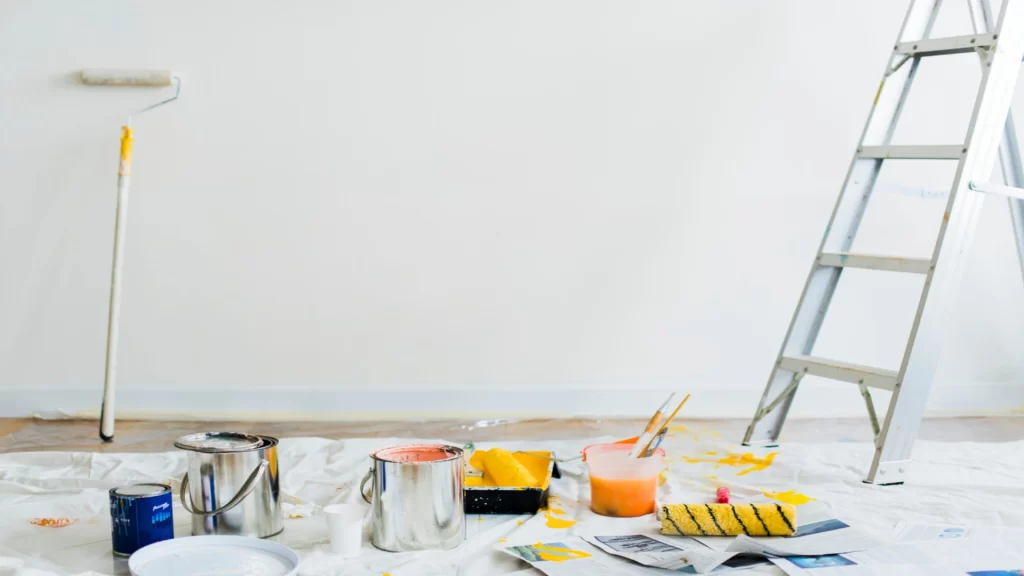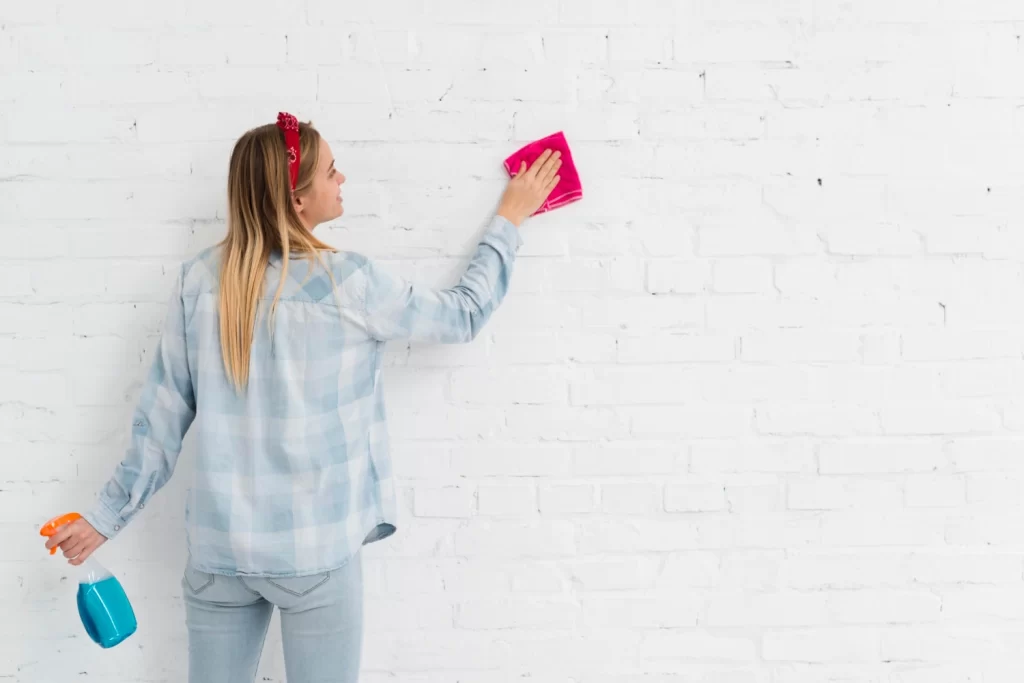
1. Gently Clean High-Touch Surfaces Regularly
Staying on top of cleaning the high-touch areas will go a long way toward keeping that freshly painted look. Regularly wiping down areas like door frames, windowsills, banisters, and the area around the light switches will prevent buildup of natural oils, body lotions, or any grime that can make your surfaces look dingy and damage the paint. However, make sure you use a gentle cleaner and don’t apply to much pressure.
2. Keep Leftover Paint Handy for Touch Ups

Make sure to store your leftover paint in a cool, dry place, and have it clearly labeled with the corresponding room. If you have the same color paint and a clean brush on hand, you’ll be more likely to take care of those small touchups before they become bigger and more noticeable problems. Remember to try cleaning the spot first, and only resort to paint touchups when the coverage is compromised, or the stain cannot be removed.
3. Watch for Mildew and Address Immediately
Without proper upkeep, mold and mildew can become a problem fast in bathrooms, kitchens, and around windows, especially if you live in an area with high humidity or extensive rainfall. Mildew can be very hard to combat, so catching it early is important, before it seeps further into the paint and spreads.
High-quality, moisture and mold-resistant primers and paint finishes help to prevent this issue. You can also reduce the moisture in the room, thereby making the environment less conducive to the mold and mildew. Opening a window while cooking and always using the exhaust fan, even when boiling water will help in the kitchen. Make sure to always use your exhaust fan and crack a window, if you have one, in the bathroom when showering or bathing. Dehumidifiers and frequently airing out your house on sunny days will help in the rainy season and in humid areas.
4. Avoid Scuffs from Furniture and Doors
One of the most common sources of paint damage is scuffs, or dents from furniture and doors. If you have dinette, desk, or living room chairs that get pushed back close to the walls, consider installing chair rails or wainscotting to protect the walls. You can also just pull the table out further and move the chairs further into the room, away from the walls. To prevent damage from doorknobs, ensure that you have a good door stop for any doors that swing into walls.
5. Smoke Outdoors
If you or a housemate is a smoker, ensure that no one smokes in the house. Tobacco smoke yellows paint very quickly and creates a film on your walls that is very difficult to remove. It’s much easier to avoid smoking indoors all together.
6. Degrease Walls Around Stove Often
In the kitchen, cooking grease is carried in the steam from the stove and can accumulate on your walls and cupboards, quickly becoming sticky, and attracting dust and dirt like a magnet. Using your exhaust fan every time you cook will help reduce build up. In addition, make it a point to wipe down the walls and cupboards around your stove frequently before the grease can accumulate.
7. Limit Use of Molly Bolts
Molly bolts, toggle bolts, and anchors allow you to hang things on your wall where there is no stud. They can be a real help in certain situations, but on your interior walls, they can do major damage to your paint. When you decide to redecorate, or even move decor around, you’re stuck with a big hole or an ugly screw with a metal or plastic ring around it. You may even have noticeable chipping or cracks in the paint. Whenever possible, use a stud finder, and nails or wood screws, to fasten pictures and other items to the wall instead. Repairing holes in the wall is no fun, and then you have to touch up the paint, which may end up looking like a spot that has been touched up.
